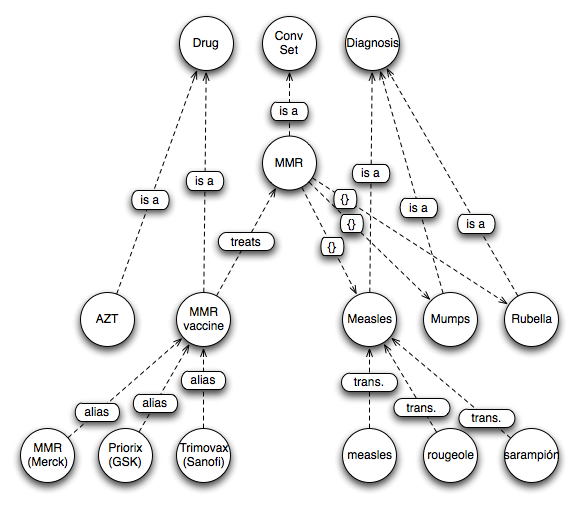<html><head><title></title></head><body>h1. User Goal: refine expressiveness
The concept model must accommodate the expression of statements which accurately represent the intent of the speaker (the user doing the data capture), allowing the speaker to express concepts in their preferred idiom.
(Design principle: the tool should conform to the user, not the user to the tool)
Example statements which must be represented...
- "Measles" is a diagnosis. (classification)
- Measles is known as “measles†in the United States. (translation)
- "Measles" is the preferred name for measles in the United States. (qualified translation)
- Measles is known as "rougeole" in France. (translation)
- Measles is known as “rougeole†in Rwanda. (translation)
- Measles is known as “sarampión†in Spain. (translation)
- Measles, Mumps and Rubella are related. (association)
- how are they related? just in the treatment? Is this important?
- Measles Mumps Rubella is known by the shorthand “MMR†in the United States. (abbreviation)
- Measles Mumps Rubella is a vaccine. (classification)
- Measles Mumps Rubella vaccine manufactured by Merck is known by the trade name "M-M-R". (specialization)
- Measles Mumps Rubella vaccine manufactured by GlaxoSmithKline is known by the trade name "Priorix". (specialization)
These statements can be visualized in a graph like this .
Design
- Concept Graph Class Diagrams
- User Locale
User Goal: preserve intent
The concept model must accurately represent the intent of the speaker by preserving the exact expression of a concept. Though presenting the underlying concept is a reasonable assumption, doing so applies a possibly inaccurate interpretation.
</body></html>
